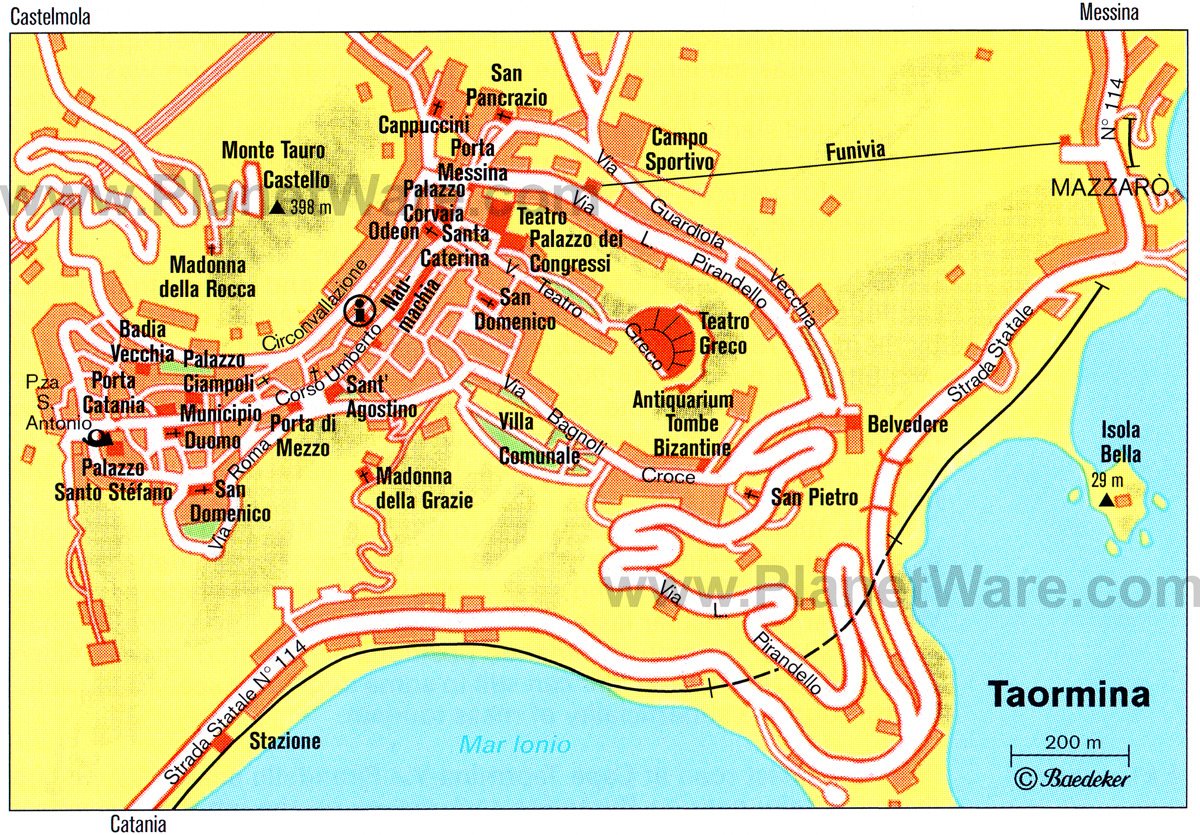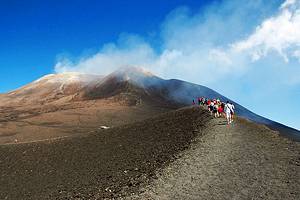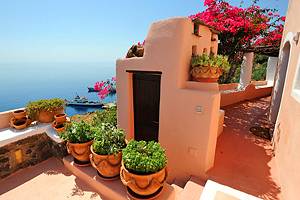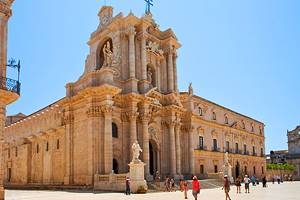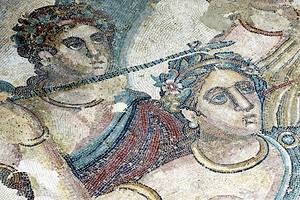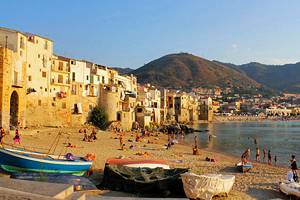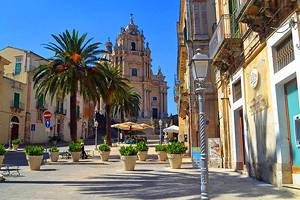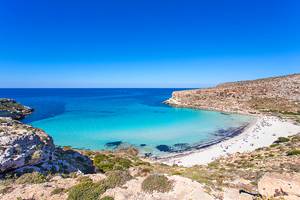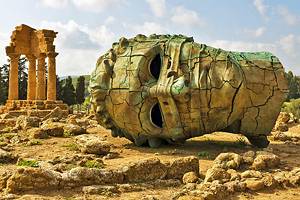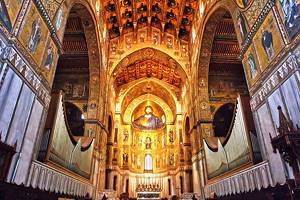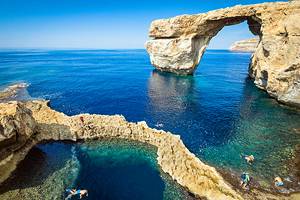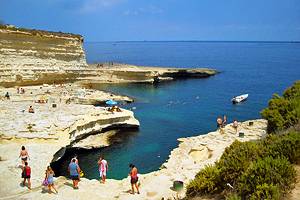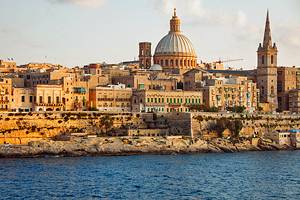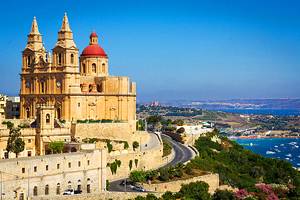Attractions & Things to Do in Taormina
On a rocky terrace high above the Ionian Sea on the east coast of Sicily, Taormina couldn't ask for a more beautiful setting. Views of the sea and Mt. Etna, often with a puff of steam wafting above its smoldering cone, are framed by flower-draped houses or by the finest Greek theater on the island.
Taormina's most important tourist attractions are this ancient amphitheater and the picture-perfect qualities of the town itself. But there's a lot more to see and do here, whether it's marveling at the beautiful Baroque church interiors, shopping in the boutiques that lure the town's many cruise ship passengers, strolling in its streets and gardens, climbing up to its castle, or descending to the beaches below.
Plan your trip with our list of the top attractions and things to do in Taormina.
- Teatro Greco (Greek Theater)
- Stroll along Corso Umberto
- Piazza IX Aprile and San Giuseppe
- Villa Comunale
- Madonna della Rocca and Via Circonvallazione
- Swim at Isola Bella
- Castelmola
- Cattedrale di San Nicola
- Porta Catania and Palazzo Duca di Santo Stéfano
- Palazzo Corvaja
- Sant'Agostino
- Explore Gole dell'Alcántara (Alcantara Gorge)
Teatro Greco (Greek Theater)
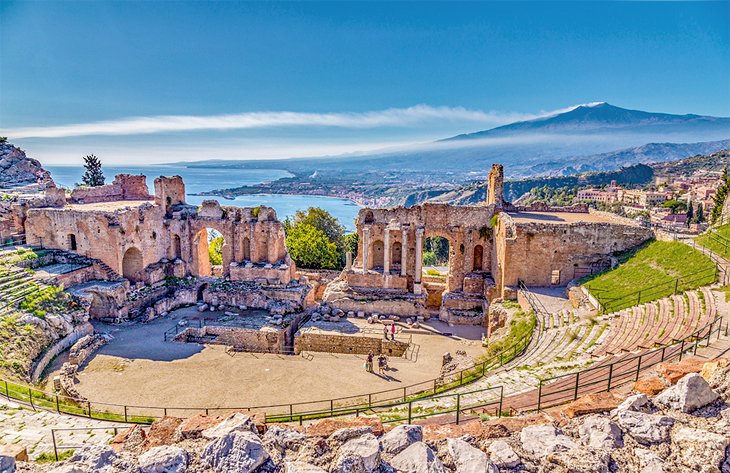
Taormina's most famous landmark is the Greek Theater, originally built in the third century BC under Hiero II of Syracuse. Under Roman rule in the second century BC, it was completely rebuilt with all the characteristics of a Roman theater.
The perfectly semicircular cavea rises in stepped seating to an upper diameter of 109 meters, the stage stands above the level of the orchestra, and the finely decorated stage loft is so high that its sides adjoin the top rows of seats to create an enclosed space.
A fortuitous gap in the wall of the loft frames Taormina's most celebrated view of the surrounding countryside as far as Mount Etna, one that has been immortalized in paintings and photographs as one of Italy's most iconic.
Address: Via Teatro Greco, Taormina
Stroll along Corso Umberto
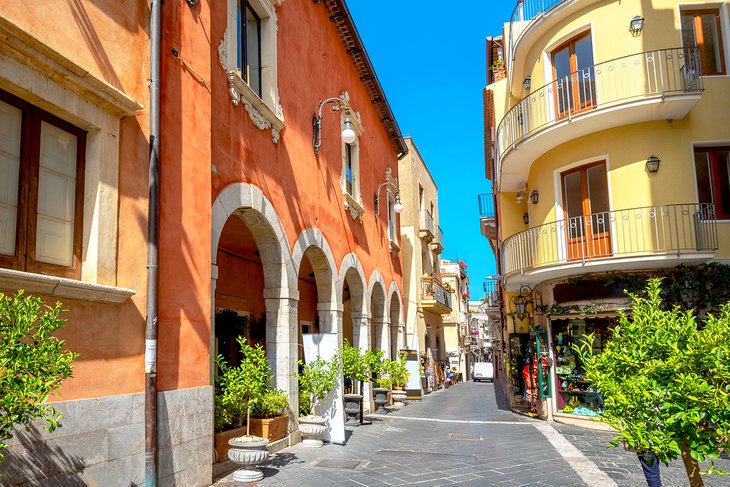
For most tourists, the greatest appeal of Taormina is the town itself. Its streets are a pleasure to stroll, lined with romantic buildings and opening onto terraces with stunning views.
Taormina's main street, Corso Umberto, begins at Piazza IX Aprile and then crosses the town before ending at Porta Catania. The entire street, with its squares and terraces, shops and open-air cafés seems made for sauntering and stopping to savor the views of Mt. Etna and the sea.
Little lanes, often rising in steps, lead off the main street and are worth exploring, too. Just strolling along Corso Umberto, browsing in its shops and stopping in a café for an espresso or gelato, is one of the most popular things to do in Taormina.
The approach to the town is equally appealing: from the coast road at Cape Taormina, Via Pirandello snakes its way up the mountain, passing Byzantine rock-graves on the left, the belvedere on the right, and the funicular to Mazzarò. It brings you to Porta Messina, which, together with the adjoining Piazza Vittorio Emanuele, forms the grand entrance to the town.
Piazza IX Aprile and San Giuseppe
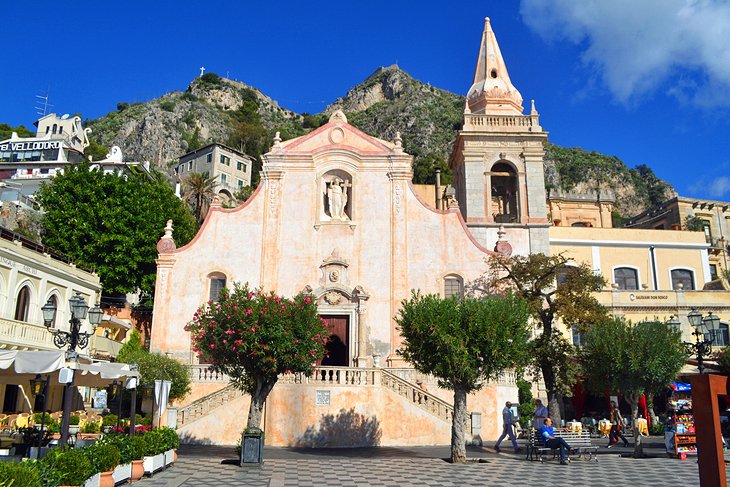
Piazza IX Aprile, which lies along Corso Umberto, opens onto a terrace with a beautiful view of Mt. Etna and the bay. This piazza is where the older part of the town begins, marked by a square stone clock tower.
Decorating the piazza is the double stairway and Baroque façade of San Giuseppe, a pink confection of an exterior. The bright white interior of Rococo stucco work is so ornate and covered with swirls and flourishes that it looks like a frosted wedding cake.
Villa Comunale
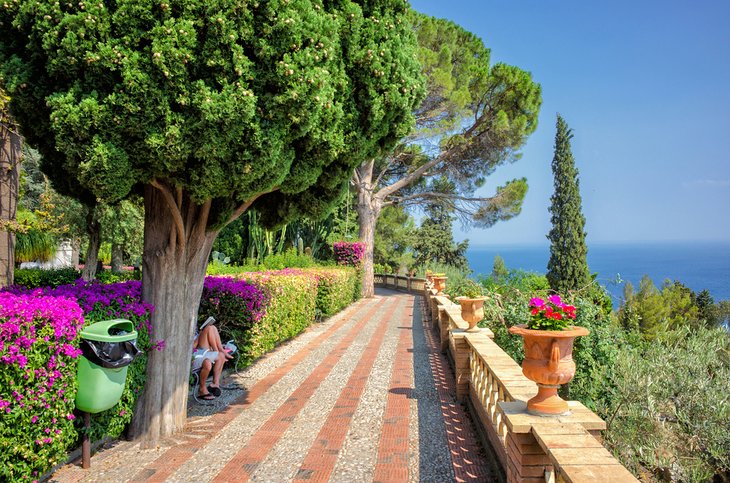
Below the former Dominican monastery, Via Roma runs east to the municipal gardens of Villa Comunale. The gardens were created by Florence Trevelyan, an Englishwoman who planted rare species here and built the fanciful and imaginative Victorian stone follies that survive today.
Its commanding position offers some excellent viewpoints, and you'll find more if you follow Via Bagnoli Croce on to the Belvedere. From here, you can return on Via Luigi Pirandello, passing below the Greek Theater, to the Porta Messina.
Address: Via Roma, Taormina
Madonna della Rocca and Via Circonvallazione

Via Circonvallazione runs parallel to Corso Umberto, and a stepped road leads from here up to the Madonna della Rocca, a chapel whose ceiling is the rough rock from which it was carved. The route continues up to Castello di Taormina, 398 meters above sea-level on Monte Tauro.
This castle with its tower stands on the site of the ancient Acropolis, and the view from here is spectacular. It is also possible to reach the castle along the winding road that starts on the Circonvallazione and continues to the picturesque mountain village of Castelmola.
Swim at Isola Bella
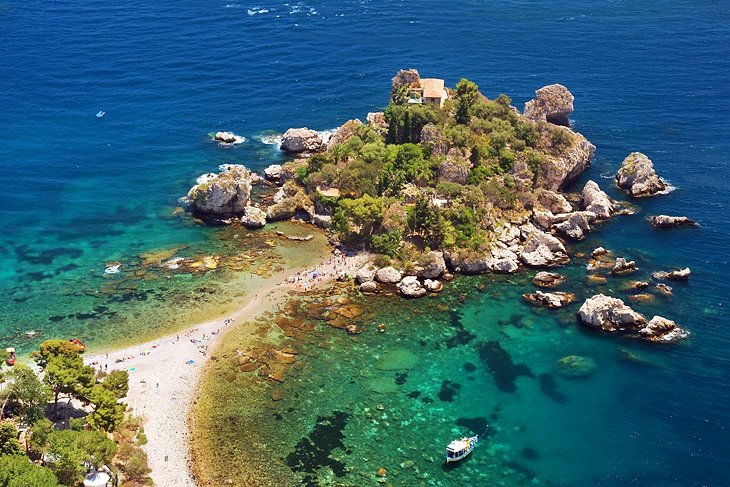
In the sea below Taormina is a small rock-bound island with a nature preserve, almost connected to the mainland by a sandy beach. You can cross to walk the paths around its perimeter and enjoy the views from its terraces.
All along the shore below Taormina are coves and beaches for swimming, which you can reach by paths. There is also a cable car between Taormina and the beach resort of Mazzaro, just below town. Just north of Mazzaro are more beaches at Spisone, Mazzeo, and Letojanni. You can also take a bus to the beaches.
Castelmola
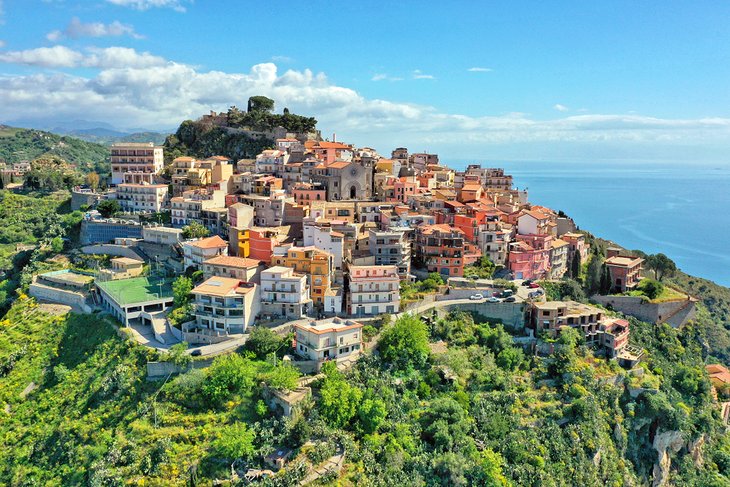
High above Taormina, at an altitude of 529 meters, the picturesque village of Castelmola, perches atop a rocky crag. From its lofty terraces, you can look down onto Taormina, the Ionian Sea and Mt. Etna.
It is not only the views that make Castelmola appealing to tourists; it is listed among the Most Beautiful Villages of Italy, and a walk through its narrow, colorful streets proves why. Bright ceramics decorate the walls, and at its top are the ruins of a castle. Castelmola is about five kilometers from the center of town and accessible by bus.
Cattedrale di San Nicola
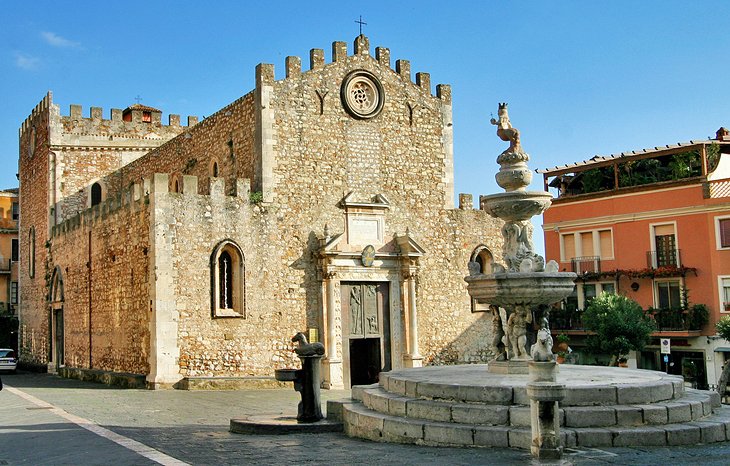
Opposite the Town Hall, the street widens out into Piazza del Duomo, with the Cathedral of San Nicola. Founded by the Hohenstaufens in the 13th century and altered several times in the 15th to 17th centuries, it combines medieval and more recent features.
The unplastered exterior, with its crenellations, is original, whereas the Baroque main door was added in 1636 and matches the 1635 Baroque fountain in the middle of the square. The three aisles of the basilica are separated by large pillars supporting pointed arches.
The interior is decorated with a number of works dating from the 15th and 16th centuries, including the 15th-century Visitation of the Virgin Mary by Antonio Giuffrè and Madonna and Child with Saints by Antonello da Saliba, painted in 1504.
Address: Piazza del Duomo, Taormina
Porta Catania and Palazzo Duca di Santo Stéfano
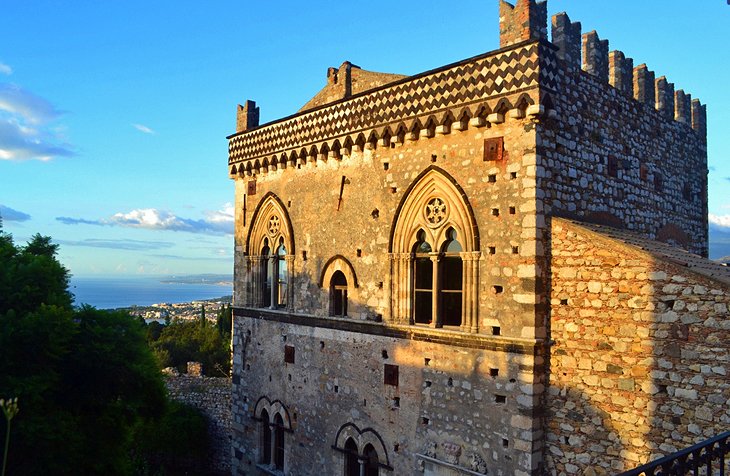
Corso Umberto, Taormina's main street, ends at the 1400 city gate, Porta Catania, emblazoned with the Aragon coat-of-arms. Near it stands the three-storied Palazzo Duca di Santo Stéfano, built at the same time as Porta Catania.
It is easy to recognize because of its Gothic windows, fish-tail crenellations, and detailed stonework along the top. Concerts are held in the Great Hall, and two rooms display works by the sculptor Giuseppe Mazzullo (1913-88).
Address: Via de Spuches, Taormina
Palazzo Corvaja
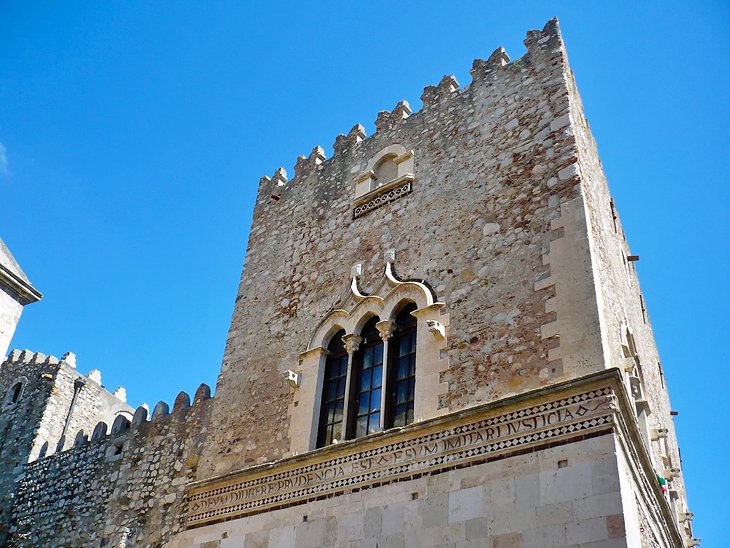
Completed at the very beginning of the 1400s, Palazzo Corvaja housed the Sicilian Parliament of Nobles meetings in 1410. The best preserved palazzo in Taormina, the palace incorporates a 10th-century Saracen tower with a later triple window under graceful curved arches.
The severe crenellated front has twin windows, also with slender columns and arches. On the left side, a Gothic doorway leads into the inner courtyard, where you'll see reliefs depicting the Creation.
Inside the palace is the Sicilian Museum of Art and Folk Traditions, filled with works by Sicilian craftsmen from the 16th to the 20th centuries. Here, you'll see examples of ceramics, wood sculpture, colorful Sicilian carts, and needlework. The church of Santa Caterina and remains of a small Roman theater are in the same square.
Address: Piazza Vittorio Emanuele, Taormina
Sant'Agostino
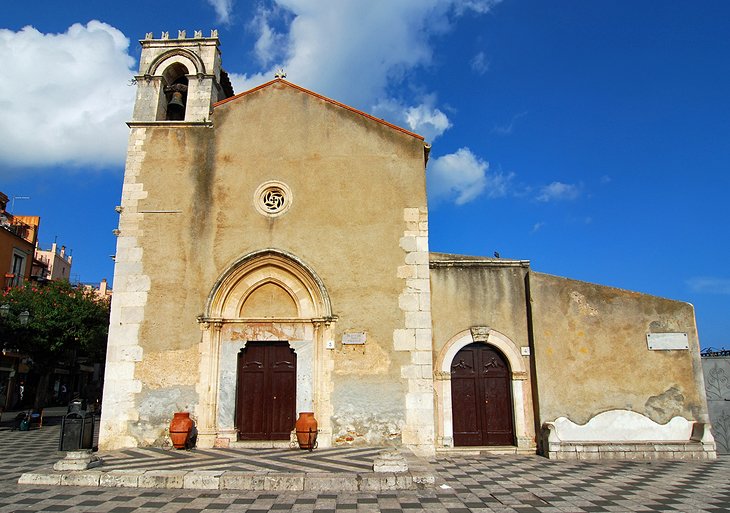
The little Gothic church of Sant'Agostino was built in 1448, dedicated to Saint Sebastian, who was believed to have miraculously saved the city from the plague. It was later expanded into a monastery of the Hermits of St. Augustine, whose friars changed its dedication.
Originally a Sicilian-style late Gothic building, it was substantially changed around 1700, adding the bell tower and entrance arch replaced with the present entrance. Only the top of the arch and the small rosette above the door remain from the original church. It is now used as a public library. Its campanile is a small crenelated tower, and the door was added in 1700.
Address: Piazza IX Aprile, Taormina
Explore Gole dell'Alcántara (Alcantara Gorge)
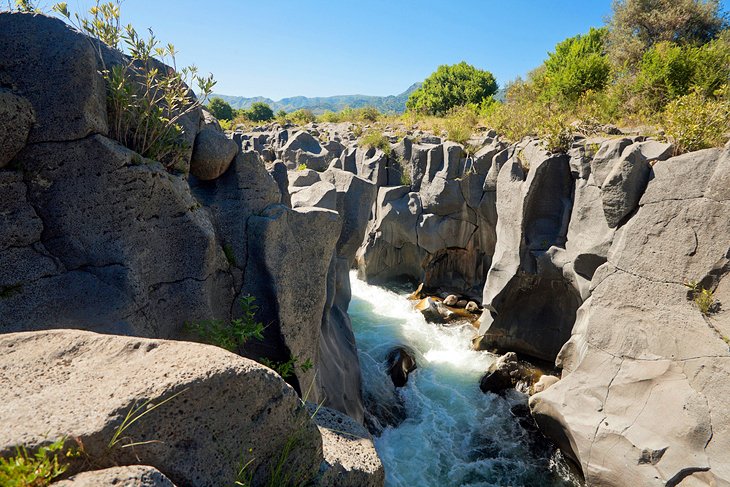
The Gole dell'Alcántara is a dramatic and evocatively romantic gorge with fantastic rock shapes, some 50 meters deep and only five meters wide. The Alcántara River flows along the northern side of Mount Etna, and several thousand years ago, a lava flow from an eruption blocked the river.
The water caused the lava to cool much faster than usual, so it crystallized into a column formation. Over time, the river eroded the columns, regaining a channel through and wearing them into the dramatic shapes you see today.
The gorge is now part of the Gole Alcantara Botanical and Geological Park, where you can descend to the river level by a lift; walk the trails; and in the summer, wade across the river. More adventurous travelers can join a guided bodysurfing tour through the canyon. The gorge is about 30 minutes from Taormina by bus, even less by car or taxi.
Address: Via Nazionale 5, Motta Camastra
More Related Articles on PlanetWare.com
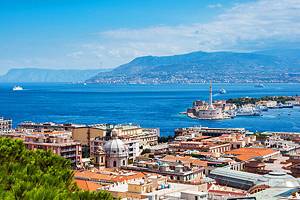
Where to Go from Taormina: Sicily's eastern coast is lined with places to visit. Nearby Catania is filled with Baroque architecture, and both Greek and Roman theaters are primary tourist attractions in Syracuse. North of Taormina is Messina, and the northern coastal towns are easy day trips from Messina.

Exploring Sicily: Other top places to visit in Sicily include the ancient sites of the Valley of the Temples in Agrigento and the spectacular mosaic floors of Villa Romana at Enna. If time allows, head farther west to explore the attractions of Palermo and the beautiful Monreale Cathedral.
